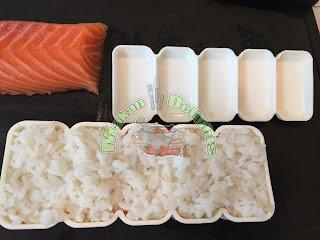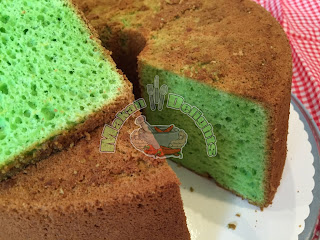Another local favourite back home & also my hubby's besides his
Mee Rebus! As promised, I prepared this dish for lunch two weekends ago. This is the Mee Siam with gravy version. If you want to make it more spicy, add more chillies! The following recipe is spicy enough for me, taking into consideration the
Sambal Tumis which is served on the side.
Ingredients (serves 6):
1 pkt (400 g) beehoon (rice vermicelli), to be soaked in water for an hour & drained
500 g beansprouts, to be cleaned & tails removed
300 g shelled prawns
3 tbsp taucheo (soya bean paste), to be pounded coarsely
salt to taste
cooking oil
Ingredients to be blended:
15 stalks dried red chillies, to be cut, soaked in warm water & drained
1 big onion, to be peeled & sliced
4 pips garlic, to be peeled & sliced
2 tbsp dried prawns, to be soaked in warm water & drained
Gravy Ingredients:
2 stalks lemon grass, to be crushed
2 cm galangal (lengkuas), to be crushed
50 g peanuts, to be deep-fried & finely grounded (you may use the snack peanuts)
200 g taucheo (soya bean paste)
1.5 litre water to be mixed with 2 tbsp of fresh tamarind
6 tbsp sugar or to taste
salt to taste
cooking oil
Ingredients to be blended:
15 stalks dried chillies, to be cut, soaked in warm water & drained
10 red shallots, to be peeled & sliced
2 tbsp dried prawns, to be soaked in warm water & drained
Garnishing:
2 pcs firm beancurd, to be deep-fried & cut into cubes
a bunch of chives, to be washed, dried & cut into 2 cm lengths
5 small limes, to be halved or 1 lime, to be cut into wedges
4 or 6 hardboiled eggs
How to prepare the gravy:
In a medium-size pot, heat enough oil over medium/high heat. Add the blended ingredients and stir-fry until fragrant. Add in the crushed lemon grass and galangal.
Add taucheo, sugar, tamarind juice and salt to taste. Bring to a light boil over medium heat. Then, add grounded peanuts and simmer for at least 20 - 30 minutes. Check seasoning. Once done, remove from heat.
How to prepare the noodle:
In a wok, heat enough oil over medium/high heat. Add the blended ingredients and stir-fry until fragrant. Then, add the taucheo and stir well. Check seasoning. Then, check seasoning and then, add the prawns. Mix well.
Add beehoon portionwise and mix well. Finally, add the beansprouts and mix thoroughly.
To serve, add a serving portion into a bowl and pour some gravy on top. Serve garnished with fried beancurd cubes, chopped chives, one half of a hardboiled egg and
Sambal Tumis (optional) on the side.
Bon Appetit!





















































